Top Strategies to Train Teams on Customer Service Skills
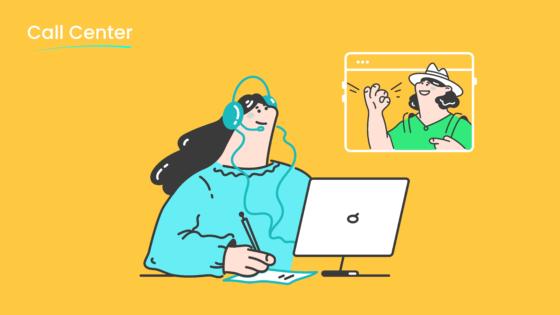
Imagine walking into a store and being greeted by a team that knows exactly how to help you. Feels great, doesn’t it? That’s the magic of well-trained customer service teams. They don’t just answer questions—they create experiences that make customers want to come back.
Did you know 75% of customers are willing to spend more with businesses that provide excellent service? And 57% say great service is the reason they stick to a brand. This shows how customer service training isn’t just about handling complaints—it’s about building loyalty and trust.
When your team masters the best customer service skills, your business doesn’t just grow—it thrives. Tools like Sobot’s solutions can help you empower your team to deliver exceptional service every time.
Identify Training Needs for Best Customer Service Skills
Conduct Skills Assessments to Pinpoint Gaps
Before diving into customer service training activities, you need to know where your team stands. A skills assessment is the best way to identify gaps in customer support skills. Start by creating a simple spreadsheet that lists each team member, their current skill levels, and the desired levels for key competencies. This approach helps you see exactly where improvements are needed.
For example, if your team struggles with resolving issues on the first call, focus on improving first-contact resolution rates. Use a standardized format to ensure consistency across assessments. Skills mapping can also help you prioritize training by identifying which skills are most critical for your business.
Tip: Quantify skill gaps by assigning ratings to each competency. Focus on areas where the gap is widest to make the biggest impact.
Gather Customer Feedback for Insightful Training Focus
Your customers are your best critics. Their feedback can reveal exactly what your team needs to work on. Metrics like Customer Satisfaction (CSAT), Customer Effort Score (CES), and Net Promoter Score (NPS) provide valuable insights.
| Metric | Description |
|---|---|
| Customer Satisfaction (CSAT) | Measures how satisfied customers are with products/services, using a scale to assess specific parts of the experience. |
| Customer Effort Score (CES) | Assesses the effort required by customers to resolve issues or fulfill requests, indicating areas for service improvement. |
| Net Promoter Score (NPS) | Gauges customer loyalty and likelihood to recommend the service, providing insight into overall customer sentiment. |
For instance, if your CES score shows customers find it hard to resolve issues, focus on training your team to simplify processes. Tools like Sobot’s Omnichannel Solution can help by streamlining communication across platforms, making it easier for your team to deliver seamless service.
Analyze Team Performance Metrics to Set Benchmarks
Numbers don’t lie. Analyzing team performance metrics helps you set realistic benchmarks for customer service training activities. Look at key performance indicators (KPIs) like task completion rates, revenue per employee, and cycle time.
| KPI | Measurement Unit | Target/Benchmark | Current Value | Status |
|---|---|---|---|---|
| Task Completion Rate | Percentage (%) | ≥ 95% | 92% | Needs Focus |
| Revenue per Employee | Dollars ($) | $150,000 | $135,000 | Below Target |
| Cycle Time | Days | ≤ 3 days | 4 days | Improvement Needed |
| Employee Engagement Score | Scale (1-10) | ≥ 8 | 7.5 | Suboptimal |
Dashboards and analytics platforms like Tableau or Power BI can help you track these metrics in real time. For example, if your team’s task completion rate is below 95%, focus on training that improves efficiency. Sobot’s Voice/Call Center solution can also assist by automating workflows and reducing average handle times, helping your team meet benchmarks faster.
Create Engaging Customer Service Training Content
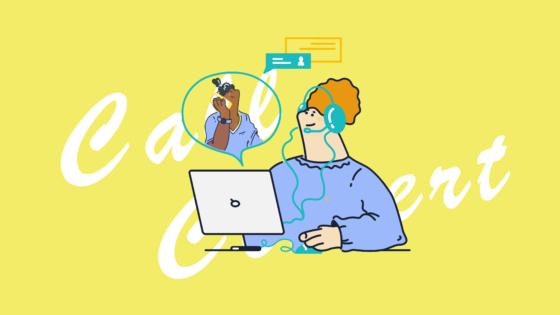
Use Real-Life Scenarios and Role-Playing Exercises
Imagine your team stepping into the shoes of a frustrated customer trying to resolve an issue. Role-playing exercises like this can transform how your team handles real-life customer service scenarios. These activities simulate actual interactions, helping your team practice empathy, problem-solving, and communication skills.
Companies like Amazon and AT&T have seen remarkable results using role-playing in areas like Kindle support and internet troubleshooting. For example, AT&T empowered its support staff to resolve connectivity issues faster, boosting customer satisfaction.
| Company | Application Area | Outcome |
|---|---|---|
| Amazon | Kindle support | Increased customer satisfaction |
| Microsoft | Windows troubleshooting | Reduced support costs |
| AT&T | Internet connectivity issues | Empowered support staff to resolve issues |
Role-playing doesn’t just prepare your team for challenges—it builds confidence. It’s also a great way to address the $75 billion annual loss businesses face due to poor customer care. By practicing these scenarios, your team learns to handle conflicts effectively, ensuring smoother customer interactions.
Incorporate Customer Service Training Games for Interactive Learning
Who says training has to be boring? Customer service training games make learning fun and engaging. Games like "Customer Puzzle" or "Service Bingo" challenge your team to solve problems creatively while reinforcing key skills.
Interactive games improve retention and boost engagement. Studies show that companies with comprehensive training programs see a 92% increase in employee engagement and a 17% rise in productivity.
| Statistic | Description |
|---|---|
| 218% higher income | Companies with comprehensive training programs have significantly higher income per employee compared to those without formal training. |
| 17% more productive | Companies see a 17% increase in productivity when employees receive the training they need and want. |
| 59% improvement | 59% of employees believe that training directly enhances their performance. |
| 92% engagement | 92% of employees feel that workplace training positively affects their job engagement. |
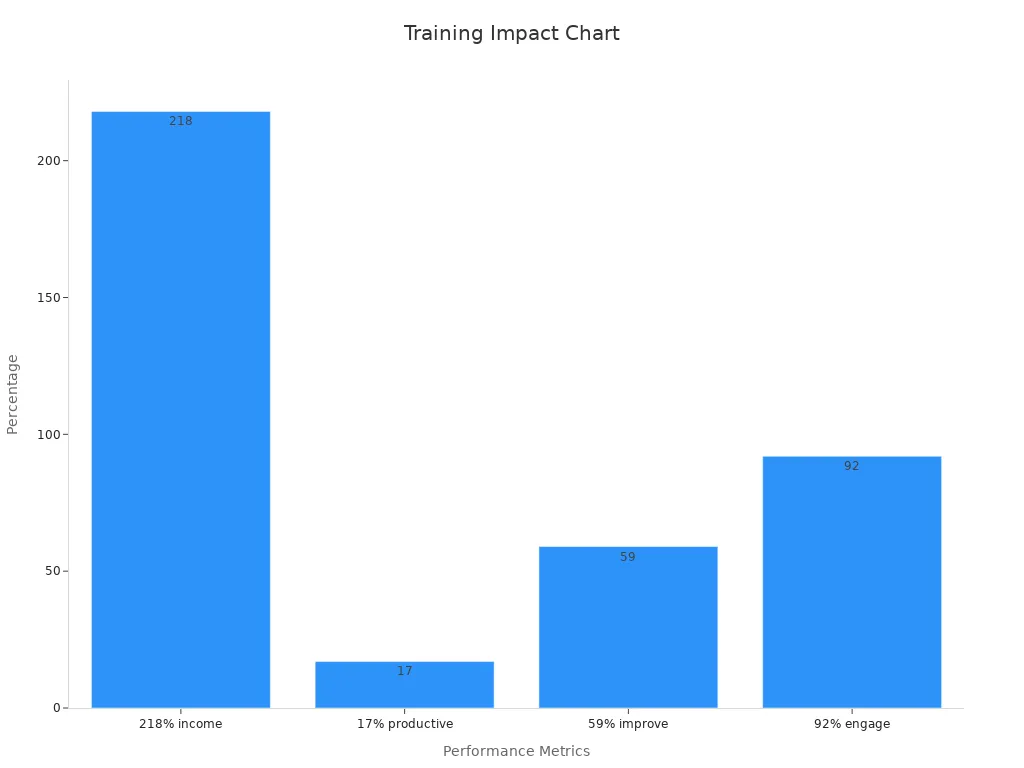
Sobot’s Omnichannel Solution can complement these games by providing real-time analytics on team performance. This allows you to track progress and identify areas for improvement, ensuring your training efforts hit the mark.
Leverage Multimedia Tools for Dynamic Training Sessions
Multimedia tools bring customer service training to life. Videos, e-learning modules, and workshops create immersive experiences that captivate your team. Visual aids simplify complex concepts, while animations make learning more engaging.
| Aspect | Benefit |
|---|---|
| Engagement | Trainers can deliver content in a dynamic and engaging manner using audio-visual systems. |
| Information Conveyance | Visual aids and animations help simplify complex concepts and enhance understanding. |
| Knowledge Retention | A multimedia-rich environment promotes better retention and collaboration among trainees. |
For example, video training can demonstrate best practices for handling difficult customers, while e-learning modules allow your team to learn at their own pace. Sobot’s Voice/Call Center solution integrates seamlessly with multimedia tools, offering features like call tracking and AI-powered voicebots to simulate real-world scenarios.
Dynamic training sessions don’t just teach skills—they inspire your team to apply them confidently. By combining multimedia tools with interactive elements, you create a learning environment that drives results.
Invest in Skilled Trainers and Resources
Hire Experienced Trainers with Customer Service Expertise
You wouldn’t trust an untrained pilot to fly a plane, right? The same logic applies to customer service training. Hiring experienced trainers ensures your team learns from the best. These professionals bring real-world expertise, teaching your team how to handle even the trickiest customer interactions.
Well-trained employees don’t just answer questions—they solve problems and build trust. Research shows that ongoing training boosts job satisfaction, which directly impacts customer happiness. In fact:
- 40% of customers say they’ll stay loyal to a brand that exceeds their expectations.
- 72% value excellent service over price.
By investing in skilled trainers, you’re setting your team up for success. They’ll learn to resolve issues faster, meet customer needs, and create memorable experiences. Tools like Sobot’s Voice/Call Center can complement this training by simulating real-world scenarios, helping your team practice and perfect their skills.
Provide Train-the-Trainer Programs for Internal Knowledge Sharing
Sometimes, the best trainers are already part of your team. Train-the-trainer programs empower your employees to share their expertise, creating a ripple effect of knowledge. This approach is cost-effective and ensures consistency across your organization.
Here’s how it works:
- Internal trainers deliver tailored content that meets your team’s specific needs.
- Teams collaborate to set service standards, preventing misunderstandings.
- Mapping internal processes identifies bottlenecks and improves workflows.
This model also fosters a culture of continuous learning. Employees feel valued when they’re trusted to train others, boosting morale and engagement. For example, Sobot’s Omnichannel Solution can support this by providing analytics to track training effectiveness and identify areas for improvement.
Partner with External Consultants for Specialized Training Needs
Sometimes, you need an outside perspective to take your training programs to the next level. External consultants bring specialized expertise and fresh ideas to your team. They can help you address unique challenges, whether it’s improving compliance or enhancing customer retention.
Take a look at the benefits:
| Case Study | Benefits Demonstrated |
|---|---|
| Best-in-class organizations | Gained a competitive edge through ongoing training and certification programs. |
| External training systems | Improved partner engagement and customer loyalty, leading to better sales outcomes. |
| Strategic external partnerships | Enhanced customer retention, increased sales, and better compliance with regulations. |
By partnering with experts, you’ll see a clear return on investment. They’ll help your team master advanced skills, ensuring your business stays ahead of the competition. Sobot’s solutions, like its AI-powered Voice/Call Center, can integrate seamlessly with external training initiatives, providing the tools your team needs to excel.
Leverage Technology for Customer Service Training
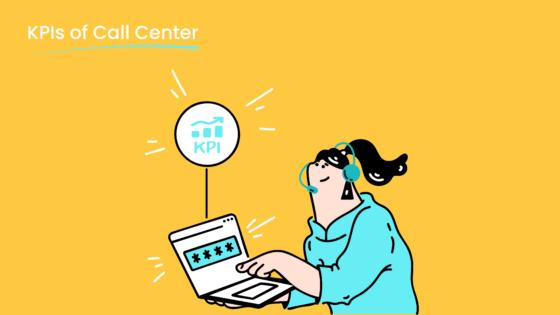
Technology has revolutionized how you can train your team, making learning faster, smarter, and more engaging. By leveraging tools like Sobot’s solutions, you can create training programs that are not only effective but also enjoyable for your team.
Utilize Sobot's Voice/Call Center for Simulated Call Handling
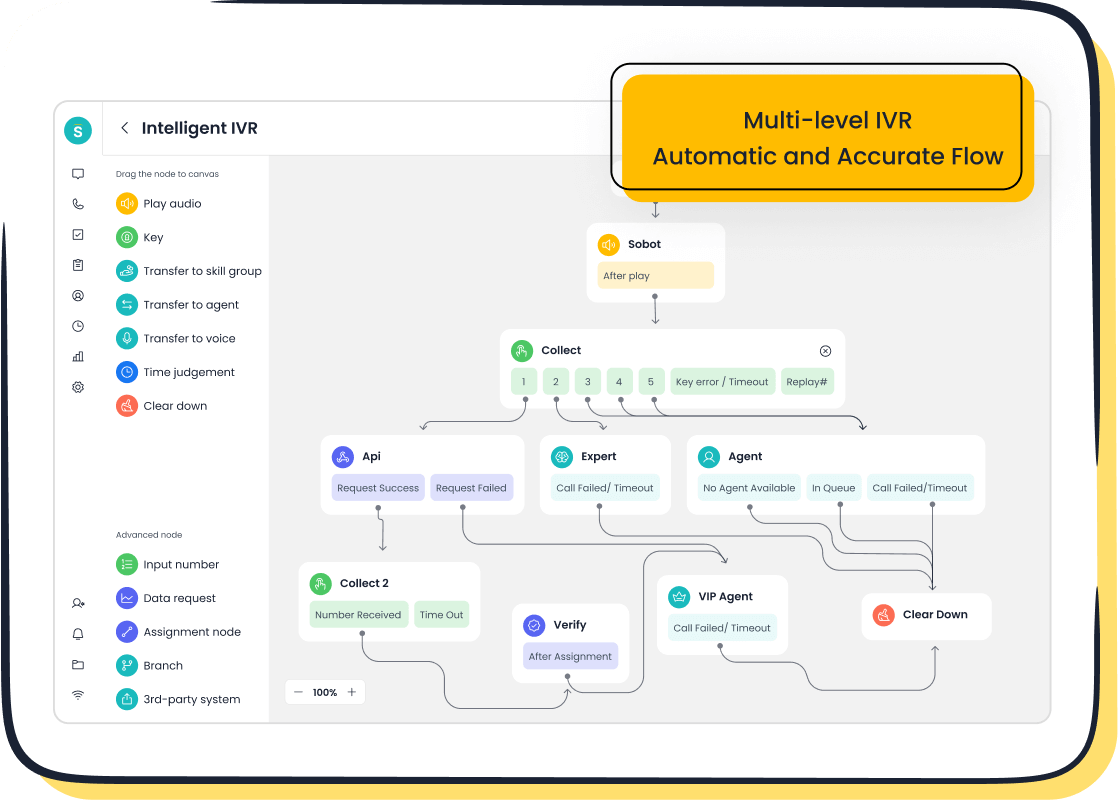
Customer service simulations are one of the best ways to prepare your team for real-world challenges. With Sobot’s Voice/Call Center, you can create lifelike scenarios where your team practices handling calls, resolving issues, and managing customer expectations. The platform’s AI-powered voicebot and smart call routing features make these simulations incredibly realistic.
Imagine your team practicing how to de-escalate a frustrated customer or upsell a product during a call. These simulations don’t just teach skills—they build confidence. Plus, AI can analyze these interactions, offering instant feedback on areas like tone, response time, and problem-solving. This accelerates quality assurance and helps you address knowledge gaps quickly.
Tip: Use Sobot’s call tracking and analytics to monitor progress and fine-tune your training sessions for maximum impact.
Implement E-Learning Platforms for Flexible Training
E-learning platforms are a game-changer for customer service training. They let your team learn anytime, anywhere, making training more flexible and accessible. Whether it’s interactive videos or mobile-friendly modules, these platforms cater to different learning styles.
| Statistic | Outcome |
|---|---|
| 82% of enterprise employees | Find interactive videos more engaging than static content |
| 40% to 60% | Reduction in learning time through e-learning |
| $30 | Average ROI for every dollar spent on e-learning |
| 90% of companies | Offer some form of digital learning for employees |
Sobot’s Omnichannel Solution integrates seamlessly with e-learning platforms, providing real-time analytics to track your team’s progress. This ensures your training programs stay on track and deliver measurable results.
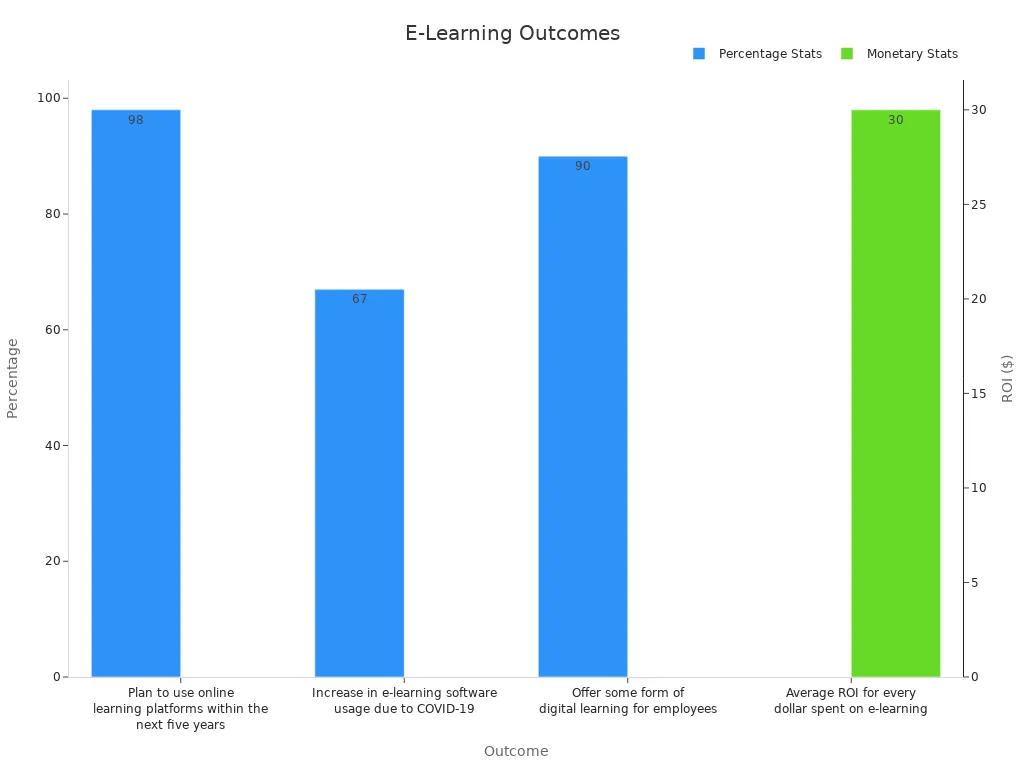
Use Gamification to Make Training Modules Engaging
Let’s face it—training can sometimes feel like a chore. Gamification changes that by turning learning into a fun and competitive experience. Adding elements like leaderboards, badges, and challenges motivates your team to participate actively.
- Gamification boosts memory and recall by 40%, with employees retaining 90% of what they learn through active participation.
- KPMG saw a 25% increase in fee collection and a 22% boost in new business opportunities after gamifying their training.
- 90% of employees say gamification makes them more productive at work.
You can even combine gamification with customer service simulations to make the experience more immersive. For example, Sobot’s Voice/Call Center can track performance during gamified scenarios, helping you identify top performers and areas for improvement.
Note: Gamification doesn’t just engage your team—it also improves job performance and customer satisfaction.
Foster a Culture of Continuous Learning
Encourage Ongoing Skill Development Through Workshops
Workshops are a fantastic way to keep your team’s skills sharp and relevant. They provide hands-on learning experiences that help employees tackle real-world challenges. For example, hosting a workshop on handling difficult customers can teach your team how to stay calm and find solutions quickly. These sessions also encourage collaboration, allowing team members to share their experiences and learn from one another.
Continuous learning is vital in today’s fast-changing world. Customer expectations, technology, and regulations evolve rapidly. Companies that prioritize ongoing skill development adapt faster and stay competitive.
| Evidence | Description |
|---|---|
| Adaptation to change | Helps teams adjust to new customer expectations, tools, and regulations. |
| Skills gap | Bridges existing gaps while preparing employees for future challenges. |
| Competitive edge | Keeps businesses relevant by integrating new trends and technologies. |
Workshops don’t just build skills—they boost confidence. When your team feels prepared, they deliver better service. Tools like Sobot’s Omnichannel Solution can complement these efforts by streamlining workflows and providing real-time insights, making it easier for your team to apply what they’ve learned.
Provide Access to Industry Resources and Best Practices
Giving your team access to industry resources and best practices is like handing them a roadmap to success. Resources such as case studies, whitepapers, and webinars keep your team informed about the latest trends and strategies. For instance, sharing insights on how AI is transforming customer service can inspire your team to embrace new tools and techniques.
Investing in these resources pays off. Targeted training improves productivity and job satisfaction, while also building a skilled workforce ready to tackle industry changes.
| Benefit | Description |
|---|---|
| Improved Employee Performance and Productivity | Enhances skills, leading to better efficiency and job performance. |
| Enhanced Employee Engagement and Job Satisfaction | Boosts morale and loyalty, reducing turnover rates. |
| Building a Skilled and Adaptable Workforce | Equips employees to handle industry challenges effectively. |
Sobot’s Voice/Call Center, with its AI-powered features, can serve as a practical example of how technology aligns with best practices. By integrating such tools into your training programs, you empower your team to deliver exceptional service.
Promote Peer-to-Peer Learning for Collaborative Growth
Sometimes, the best teachers are your own teammates. Peer-to-peer learning fosters collaboration and creates a supportive environment where employees can share knowledge and skills. For example, pairing a seasoned agent with a new hire can accelerate learning and build confidence.
This approach doesn’t just improve individual performance—it drives team success. Metrics like employee retention rates and innovation indicators often improve when peer learning is encouraged.
| Metric Type | Description |
|---|---|
| Employee Performance Metrics | Tracks productivity and efficiency improvements post peer learning. |
| Innovation Indicators | Measures new ideas generated through collaborative efforts. |
| Employee Retention Rates | Analyzes turnover rates before and after peer learning initiatives. |
| Learning and Development Metrics | Monitors participation in peer learning activities and skill progression. |
| Financial Metrics | Assesses revenue growth linked to peer learning strategies. |
Sobot’s Omnichannel Solution can support peer learning by providing a unified workspace where team members can collaborate and share insights. This fosters a culture of teamwork and continuous improvement, ensuring your customer service training efforts yield long-term benefits.
Incorporate Feedback Mechanisms into Training Programs
Feedback is the secret ingredient that transforms good training into great training. By incorporating feedback mechanisms into your customer service training programs, you can ensure they stay relevant, effective, and impactful.
Use Post-Training Surveys to Measure Effectiveness
Post-training surveys are a simple yet powerful way to gauge how well your training programs are working. They help you understand what’s clicking with your team and what needs improvement. Short, focused questions can boost response rates while giving you actionable insights. For example, ask your team to rate the clarity of the training material or the relevance of the scenarios covered.
Surveys also show your employees that their opinions matter. This fosters a culture of continuous improvement and keeps your team engaged. Companies that use both quantitative (like rating scales) and qualitative (like open-ended questions) methods get a clearer picture of training effectiveness. Plus, acting on survey feedback demonstrates that you value your team’s input, which can lead to better participation in future sessions.
Tip: Use tools like Sobot’s Omnichannel Solution to collect feedback across multiple channels. This ensures you capture diverse perspectives and identify trends in real time.
Conduct Regular Performance Reviews to Track Progress
Performance reviews are essential for tracking how well your team applies what they’ve learned. Pre- and post-training assessments can measure knowledge improvement, while learning analytics can highlight engagement levels. For instance, if you notice a drop in course completion rates, it might be time to tweak your training approach.
| Method | Description | Example of Effectiveness |
|---|---|---|
| Learning analytics | Collects quantitative data on training engagement and completion rates. | Identifies course attrition rates and engagement. |
| Pre- and post-training assessments | Measures knowledge improvement through tests before and after training. | Determines effectiveness and identifies gaps. |
| Employee feedback | Gathers qualitative insights from participants about the training. | Provides context to training effectiveness. |
Using tools like Sobot’s Voice/Call Center, you can monitor metrics like call resolution times and customer satisfaction scores. These insights help you connect training outcomes to real-world performance.
Act on Feedback to Continuously Improve Training Content
Feedback is only valuable if you act on it. Regularly updating your training programs ensures they stay aligned with your team’s needs and industry trends. For example, if feedback highlights a lack of clarity in handling escalations, you can add a module focused on conflict resolution.
Successful companies often achieve feedback response rates of 25-30%, far above the industry average of 5-10%. This shows that actively seeking and implementing feedback can set you apart. Real-time alerts and sentiment analysis tools can also help you identify and address issues quickly.
Note: Closed-loop feedback processes, where employees see how their input leads to changes, build trust and encourage more honest feedback.
By refining your training programs based on feedback, you create a cycle of continuous improvement. This not only boosts your team’s skills but also enhances the overall customer experience.
Recognize and Reward Employee Efforts in Training
Celebrate Milestones Achieved During Training
Celebrating milestones is a simple yet powerful way to keep your team motivated. Whether it’s completing a challenging module or mastering a new skill, recognizing these achievements shows your team that their efforts matter. For example, you could host a small celebration when your team finishes a customer service training program or achieves a specific performance goal.
Recognition doesn’t just boost morale—it also improves teamwork and performance. Studies show that peer recognition fosters stronger connections and better collaboration. In fact, a study by Green, Gino, and Staats found that even a short video acknowledging employees’ efforts increased performance by 7%.
| Study | Findings |
|---|---|
| Deci, Koestner, & Ryan (2001) | Peer recognition builds connections and promotes teamwork. |
| Green, Gino, & Staats (2017) | Acknowledging efforts increased performance by 7%. |
| SHRM/Globoforce (2012) | Strategic recognition programs lead to higher engagement and retention. |
By celebrating milestones, you create a positive environment where your team feels valued and inspired to keep learning.
Offer Incentives for Demonstrating Improved Skills
Incentives are a great way to encourage your team to apply what they’ve learned. Offering rewards like gift cards, extra time off, or even public recognition can motivate employees to go the extra mile. Properly structured incentive programs can improve employee performance by as much as 44% and even lift overall revenue by 1%.
For example, you could reward team members who consistently achieve high customer satisfaction scores or resolve issues quickly. Sobot’s Voice/Call Center can help track these metrics, making it easier to identify top performers and reward them accordingly. This approach not only boosts individual performance but also drives better results for your business.
Highlight Success Stories to Motivate Teams
Sharing success stories is one of the most effective ways to inspire your team. Highlighting how training programs have helped employees improve their skills or achieve career growth can motivate others to follow suit. For instance, you could showcase how a team member reduced errors or increased customer satisfaction after completing a training module.
| Metric | Impact |
|---|---|
| Increased Sales | Demonstrates improved revenue |
| Reduced Errors | Indicates higher accuracy |
| Improved Customer Satisfaction | Reflects better service quality |
Celebrating these achievements creates a culture of appreciation and encourages your team to strive for excellence. Tools like Sobot’s Omnichannel Solution can provide the data you need to track and share these success stories, ensuring your team sees the tangible benefits of their hard work.
Ensure Adaptability in Customer Service Training
Customize Training Programs for Different Roles and Teams
Not all customer service roles are the same, so why should training be one-size-fits-all? Tailoring training programs to specific roles ensures your team gets exactly what they need to succeed. For instance, a frontline agent might need skills in de-escalating conflicts, while a technical support specialist could benefit from advanced troubleshooting techniques.
Customized training doesn’t just improve individual performance—it boosts team morale and customer satisfaction.
| Benefit | Description |
|---|---|
| Improved Employee Engagement | Tailored training addresses specific needs, leading to higher motivation and involvement. |
| Better Customer Interactions | Employees equipped with role-specific skills can handle customer queries more effectively. |
| Increased Customer Satisfaction | Customized training correlates with higher satisfaction rates among customers. |
| Enhanced Retention Rates | Organizations see improved customer loyalty and retention as a result of better service. |
By using tools like Sobot’s Omnichannel Solution, you can track performance metrics and identify areas where specific teams need extra support. This ensures your training programs are always relevant and impactful.
Update Content Regularly to Reflect Industry Trends
Customer service evolves quickly. Keeping your training content up-to-date ensures your team stays ahead of the curve. Trends like microlearning, AI-driven training, and continuous learning are reshaping how teams acquire skills.
- Microlearning replaces long modules with short, targeted lessons that meet immediate needs.
- AI personalizes training, adapting to each employee’s pace and style.
- Continuous learning keeps skills sharp in a fast-changing industry.
Regular updates also help your team stay informed about emerging technologies and best practices. For example, integrating Sobot’s Voice/Call Center into your training can familiarize your team with AI-powered tools like voicebots and smart call routing, preparing them for real-world scenarios.
Adapt Training Methods to Individual Learning Styles
Everyone learns differently. Some people prefer hands-on activities, while others thrive with visual aids or self-paced modules. Adapting your training methods to match these styles ensures everyone gets the most out of the experience.
| Insight | Description |
|---|---|
| Retention | Employees retain more information when training matches their learning style. |
| Engagement | Catering to diverse styles boosts engagement and participation. |
| Effectiveness | Training becomes more effective when it aligns with individual preferences. |
| Inclusivity | Inclusive methods ensure all employees have equal opportunities to succeed. |
For example, you could combine role-playing exercises with e-learning modules to cater to both kinesthetic and visual learners. Sobot’s solutions, like its Omnichannel platform, can support this by offering flexible, multimedia-rich training options that suit various learning preferences.
Investing in customer service training isn’t just a nice-to-have—it’s a game-changer for your business. When your team feels confident and skilled, they deliver experiences that keep customers coming back. Companies with strong training programs see 218% higher income per employee and 24% higher profit margins. Plus, engaged employees are more likely to stay, reducing costly turnover.
The strategies we’ve covered—like using real-life scenarios, leveraging technology, and fostering continuous learning—can transform your team’s performance. Tools like Sobot’s Voice/Call Center and Omnichannel Solution make it easier to train effectively, track progress, and adapt to changing customer needs.
Start today. Build a team that’s not just good at customer service but exceptional. With the right training and tools, you’ll create a lasting impact on your customers and your business. 🚀
FAQ
What are the key benefits of customer service training?
Customer service training improves your team’s communication, problem-solving, and empathy skills. It boosts customer satisfaction, loyalty, and retention. For example, companies with strong training programs see 24% higher profit margins. Tools like Sobot’s Voice/Call Center make training more effective by simulating real-world scenarios.
How can technology enhance customer service training?
Technology makes training interactive and flexible. Platforms like Sobot’s Omnichannel Solution provide real-time analytics, helping you track progress and identify gaps. E-learning modules and AI-powered tools also cater to different learning styles, ensuring your team learns faster and retains more.
How do I measure the success of my training programs?
Use metrics like Customer Satisfaction (CSAT), Net Promoter Score (NPS), and task completion rates. For instance, Sobot’s Voice/Call Center tracks call resolution times, helping you connect training outcomes to real-world performance. Post-training surveys also provide valuable feedback for improvement.
Why is role-playing important in customer service training?
Role-playing prepares your team for real-life challenges. It builds confidence and improves problem-solving skills. For example, practicing de-escalation techniques helps your team handle frustrated customers effectively. Sobot’s AI-powered Voice/Call Center enhances these exercises with realistic call simulations.
How often should I update my training programs?
Update your training programs regularly to reflect industry trends and customer expectations. For example, incorporating AI tools like Sobot’s Voice/Call Center keeps your team ahead of the curve. Continuous updates ensure your team stays skilled and ready for new challenges.
See Also
Enhance Customer Satisfaction With These 10 Live Chat Tips
Top Practices for Effective Call Center Quality Management
Improve SaaS Support Through Effective Live Chat Techniques
A 10-Step Guide to Omnichannel Contact Center Implementation
